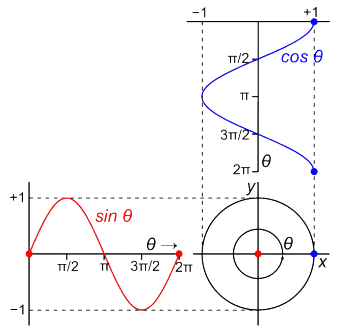MATH 3: Precalculus (Fall 2021)
Course Info
- Title: MATH 3: Precalculus
- Quarter: Fall 2021
- Credits: 5
- Location: Porter Acad 148 (In-Person)
- Time: 9:20AM-10:25AM MWF
Instructor Info
- Jadyn V. Breland (he/him/his)
- Office Location: McHenry 4153.
- Office hours: 10:00AM - 11:00AM TuTh
11:00AM - 12:00PM Mo
-
- jadynbreland.com
Welcome!
You've reached the course web page for the Fall 2021 manifestation of MATH 3: Precalculus at the University of California, Santa Cruz. This webpage is currently under construction.
Purpose and Goals:
The primary objective of this course is to prepare students to succeed in a calculus course. Calculus, the study of continuous change, is an invaluable tool in
the analysis of the physical world. Modern calculus provides a language for describing continuous change and a framework for solving problems associated to changing quantities.
The utility of calculus is pervasive across STEM fields. Besides being useful, studying calculus sharpens the mind and facilitates the development of problem solving and critical thinking skills.
In this course, we will develop the language and tools necessary for your study of calculus.
Overview
More specifically, the course will be based on the study of elementary functions and their behaviour. Elementary functions are frequently used to describe real-world scenarios, and calculus is used
to analzye these functions. The types of functions we will most frequently encounter are:
- Linear functions. These are functions of the form $$f(x) = mx +b.$$ The graph of a linear function is a line.
- Polynomial functions. There are functions like $$f(x) = x^2 + 3x + 2$$ or $$f(x) = x^5-1.$$ The former called a quadratic function - we will study these in great detail.
These are excellent for modeling many types of functions derived from real world data - like the price of a stock over time.
- Rational functions. These are ratios of polynomials, like $$r(x) = \frac{x^2 + 3x + 2}{x^5-1}$$
- Exponential functions. These are functions of the form $$f(x) = a^x.$$ They are used frequently to model things like population growth or decay.
- Logarithmic functions. These are functions of the form $$f(x) = \log_b x.$$ These are the inverses of the exponentials. You imay encounter these in chemistry (the PH scale) and in physics (the decibal scale) or even geology (the Richter scale), among other
things.
- Periodic functions. These are functions like sine, cosine, tangent, secant, cosecant, and cotangent. Periodic functions are used throughout science to describe oscillations, waves, and many other phenomena that exhibit periodicity. Additionally, they provide a framework, called trigonometry,
for studying triangles.
A significant amount of the course will focus on functions. The last few weeks will be devoted to trigonometry.
The Textbook:
You are NOT required to purchase a textbook for this course. All of the topics we will cover can be found in the (optional) textbook OpenStax: Precalculus.
This textbook is free, and there are many options for viewing it. I recommend using the .html webpage as it is the easiest to navigate.
There is also an app you can download for your smart phone or other device. There is also a .pdf version available, which I recommend you download in advance so that you can access the text
in the event that you lose access to the internet.


